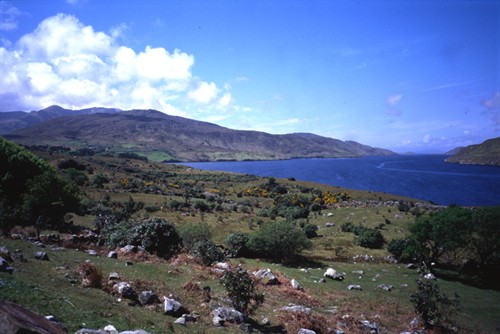The original pavement garden
This page is Sponsored by:
Along Ireland's middle west coast where the famous Cliffs of
Mohar meet the sea, stone that was once sea floor and scoured clean
of all dryland species rose up after the last ice age. It gradually
developed seams and weathered pockets. Seeds from Europe, North
America and Greenland arrived on sea- and air currents. Now, in the
cracks of the Burren pavement, a riot of plants grow. Take a few
steps, look down. Step a bit further, look down. Continue all day
rarely seeing the same plants twice.


The Burren was not on our planned route but we travelers knew of
it and knew we would be driving right through. As we approached it,
we rioted and were released to climb and ramble. If we had the
chance to return to just one place in Ireland, it would be the
Burren.


Unfortunately, Steven wasn't on this trip but good friend Debi
Slentz helped Janet compose some meaningful photos. Here, she gives
scale to a yew - the same species which gave us the hybrids and
varieties we grow as clipped foundation plants.

Outside the Burren where the pavement is overlaid with soil,
it's still pretty rocky terrain. Talk about hard scrabble farms.
Lots of sheep. Too many? Many pastures were grazed to nothing but
clumps of the yellow blooming, inedible pea-family shrub
called gorse. Those of you who have suffered through Janet's
telling of the longest pun in the world may be interested to know
she developed "You can lean a gorse to water but you can't make it
pink" on this trip.


We saw a lot of gray sky and the not-quite-droplets
precipitation the locals called "misht". As in "That's not rain,
it's just misht." When the sun did shine the intensity of color was
fabulous.


For more of our Sponsors'
recommended reading...